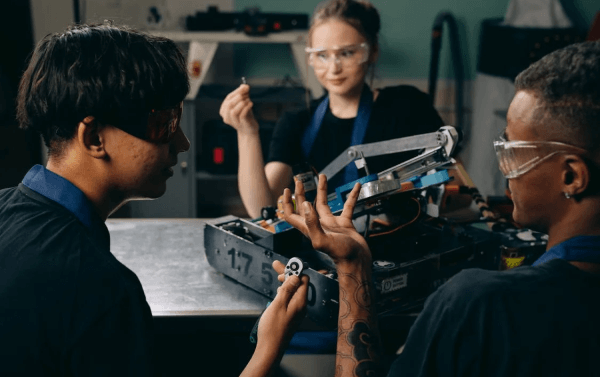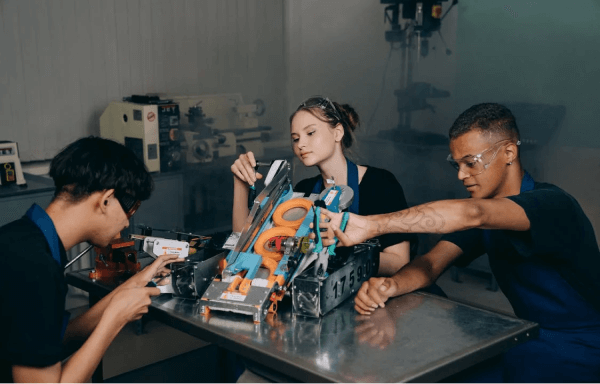10 Quality Control Issues

Quality control (QC) issues are ranked as one of the top 10 headaches in any organization. QC is a tedious process that, if your teams get it wrong, can end up costing you millions. We’ve listed down the 10 most common quality control issues and solutions to help your team get a better handle on these problems.
1. Lack of Product Understanding

Problem: Most of the time, only the product team and the C-levels fully understand what the product is meant to do. This is because most of the other workers’ interactions with it are through unassembled parts or raw materials. Some of them might not have even seen any part of the product, let alone know how it works. This issue leaves your workers vulnerable to production problems that could’ve been avoided if they understood the product.
Solution: Create an in-depth course about your product. This will help you mitigate production problems before and after they occur. It can also act as a reference when your workers have questions or concerns about the product. Some questions your course needs to answer would be: what’s your product, and what problem does it solve?
EdApp’s beginner-friendly authoring tool can help you create your product course in the nick of time. With the authoring tool, you won’t have to start from a blank page. You can use the tool’s template library to create a beautiful and engaging course with no coding experience required. You’ll be able to deploy your product course within minutes of its creation.
2. Product Documentation

Problem: From product ideation to manufacturing, a lot of key information can be said during the process without documenting it. A product manager can say one thing, while the engineers push for another – all without either of them informing the other.
Improper product documentation can cause products to have varying quality, manufacturing problems, and headaches for the customers. Since documentation helps with support, this can also make it harder on your customer support team since they won’t be fully equipped to address specific issues raised about your product.
Solution: Write down every single product detail and process from ideation to manufacturing. Ensure that everyone in the decision-making process is aware of each decision and why the process is done in a certain way. Have a deck prepared that lists each step of the product documentation to better visualize everything.
If you want to go a step further, you can also turn your already existing documents into a great course for your teams. EdApp's AI Doc Transformer (coming soon) allows you to convert your documents into a beautiful course for your teams. Doing this will help them learn from the product documentation and apply it to future projects.
3. Lack of Checklist

Problem: Having a checklist for quality control is a no-brainer. Yet, too many still rely heavily on remembering important details in their heads. This leaves your workers vulnerable to missing crucial processes, missing important components, or even failing to comply with government regulations. This quality control issue can cause miscommunication between your workers and delays in manufacturing.
Solution: Make sure everyone has a checklist. More importantly, make sure that everyone who needs to have the same checklist is aligned with their checklists. The list needs to contain the same process and details needed to be known by relevant team members. A logistics worker can’t have the checklist of the engineer. SafetyCulture has a wonderful quality control checklist template you can freely use for your teams.
4. Aligning Each Worker with the Process

Problem: Product managers know the nitty-gritty details of the production process. Can you say the same for your warehouse workers? What about your logistics team? Not everyone in the product-making process is aligned with the step-by-step of what the manufacturing team does.
It’s important that your workers not only know what their specific tasks are but also understand how their work contributes to the bigger picture. It allows them to not only address risks and problems on the job, but also offer solutions to make your product better.
Solution: Regularly training your employees in the manufacturing process will solve this issue. Your team leads need to constantly align their team members with the current process and any changes that are made by them. EdApp has great quality assurance training courses. One of the training programs is called quality control, which you can add your own process and alignment lessons to. This quality control course won’t only teach your learners about QC but also train and re-engage them with your processes. You can also check out other similar safety training programs through their course library. Some of these include courses like NY forklift training courses, fire safety training courses, first aid training courses, and much more.
5. Managing Sub-Suppliers

Problem: If you’re developing a product with several parts and materials, it’s unlikely that all of your components will be manufactured by the same plant. Many suppliers outsource some items that they can’t manufacture themselves to sub-suppliers. It’s likely that some (if not most) of your outsourced materials and parts come from these sub-suppliers.
While having subcontractors is common—even inevitable at times—quality is frequently compromised as a result. This is because having additional levels in the supply chain reduces transparency. You might not already be aware of quality control measures taken by your suppliers. What’s more with your sub-suppliers?
Solution: One thing you can do to solve this issue is to get in touch with these sub-suppliers. Most producers might get touchy about this subject, but you can give them some assurance with a non-compete agreement. In that way, you and your workers can keep in contact with their sub-suppliers and ensure quality control, without your actual producer losing sleep at night.
6. Validating Your Process

Problem: Because testing every product isn’t practical, businesses instead put the quality management process to the test. However, the process of validation can be subjective. Process validations are mostly designed in a way that the product fits your design and quality criteria every time. Your process validation may stress test your process but is it done objectively? If not, this can expose you to accidentally violating government rules and regulations.
Solution: Identify all the procedures that require you to validate them. Ensure that each step follows government safety and health regulations. You can also ask consultants to take part in your process validation to add more objectivity to it. This is how you can solve this quality management issue.
7. Lack of Logistical Care

Problem: Another common quality control issue is how your logistics provider handles your products. A lot of accidents can happen when your product leaves the warehouse until it gets delivered to your customer. A logistics worker can trip and break your product. Your packaging might end up getting damaged or wet while shipping. Parts might end up melting or catching fire if not stored properly.
Solution: Stress-test your packaging and your product before shipping. This will help you identify what your product needs to have before you hand it over to the logistics team. It’ll also help you determine your requirements for shipping, such as temperature-controlled storage, steel containers, wood containers, bubble wrap, etc.
8. Shipping Delays

Problem: Shipping delays happen for plenty of reasons. One is if something goes wrong in your own plant. Your workers might not be working as fast as you want them to be. Parts can accidentally break during product assembly. Your factory gets closed down for a health and safety inspection. Delays can get worse if your suppliers and subcontractors encounter problems of their own.
Solution: Have some room for delay in your production timeline. While QC tries to address any problems before they happen, adding some wiggle room into your timeline can help you plan better with shipping delays. That way, you won’t have to worry about distributors or customers pulling out and losing revenue in the process.
9. Addressing Complaints

Problem: You’ve checked all your boxes, dotted your i’s, and crossed your t’s. Your customers are still unhappy with your product. It could be because of a lack of information in your product manual and not really a quality problem. They don’t know how to use it properly or they’re using it the wrong way. Your product might also not be producing the kind of result that your customers expect. It wasn’t as advertised. Or, your product could be perfect but there are minor details that they wish it had.
If your team doesn’t know how to address these complaints, they can endanger your organization’s reputation and customer relationship.
Solution: Have a customer support playbook ready before you deliver your products to clients. Double-check your product manual. Make sure to flag any common or major complaints so you can address them immediately and not lose revenue in the process.
10. Reworking the Product

Problem: The last quality control issue you’ll encounter is how to rework your product while controlling quality. Factory rework can be difficult when working with goods with a ton of parts and materials. The primary concern with this is encountering new flaws due to additional handling and assembly. When you’re fixing faulty parts or adding newer components, it’ll almost certainly require the attention of several workers from different plants. The more a product is handled and the more equipment is used to rework or fix it, the greater the chances of introducing additional problems.
Solution: Update your product documentation, checklists, and guidelines as you go through the rework process. Keeping everyone up to speed with product flaws and part replacements will help you address the additional problems faster.
EdApp is a mobile learning management system designed for today’s digital habits, delivering more engaging and effective micro-learning directly to learners anytime and anywhere.
Sign up for this quality control tool today.
Author
Stephanie Escuadro
Stephanie is an eLearning content writer for EdApp, a microlearning solution designed for today's digital habits. She creates content about cutting-edge learning technologies and resources to help companies deliver great training experiences. When not absorbed in writing, she spends her time taking care of her dog and binge-watching.
